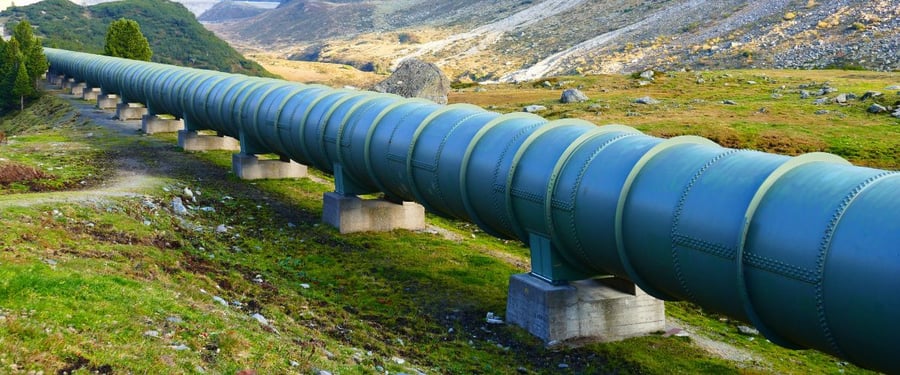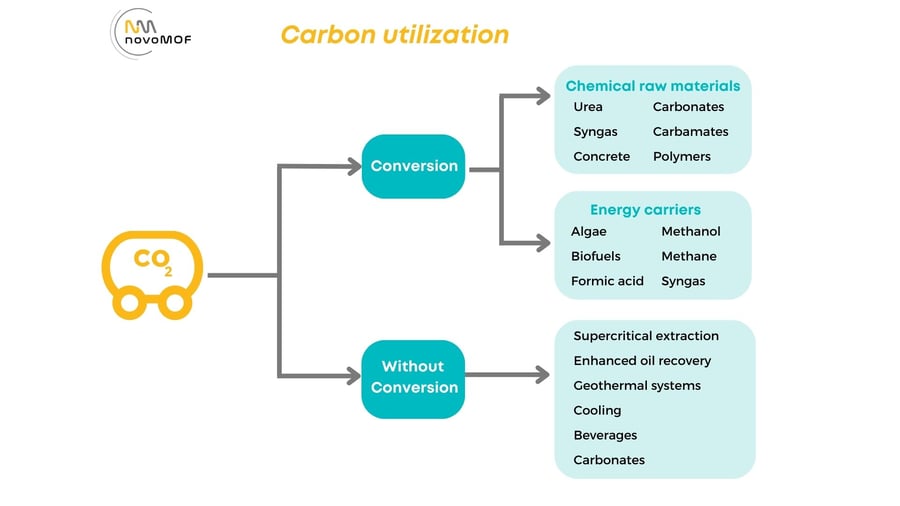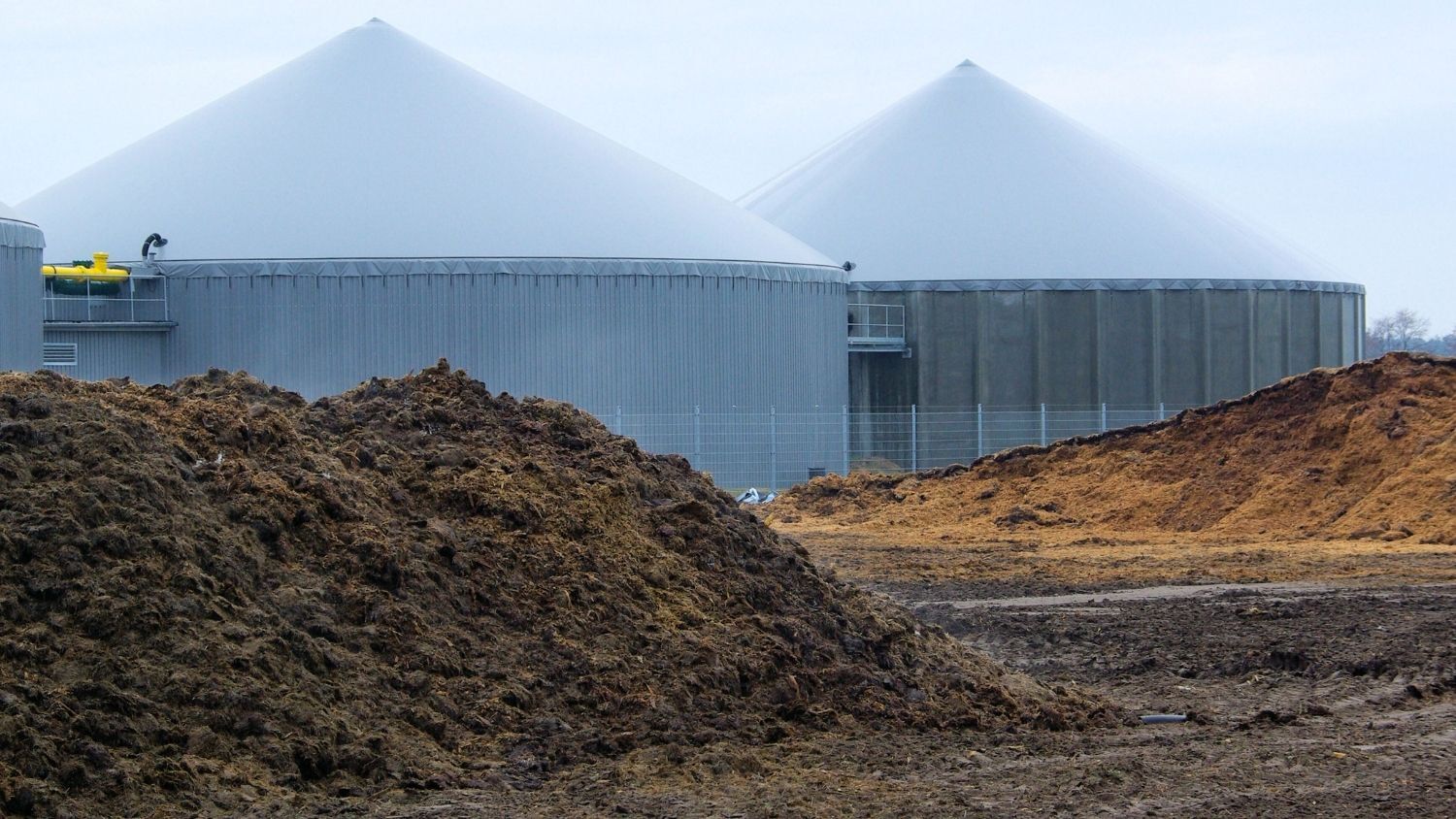In the ongoing battle against climate change, the concept of carbon capture, utilization, and storage (CCUS) has emerged as a pivotal solution. Not only does it involve capturing carbon emissions, but it also presents a promising avenue for transforming this captured carbon into valuable resources. This transformative process holds the key to mitigating greenhouse gas emissions while fostering the creation of useful products essential for various industries. In this blog, you will find insights into what can be done once carbon is captured and how adsorption technology can be applied to different areas.
Transportation and Storage: Enabling the Transformation
Transporting captured carbon to the facilities where it undergoes transformation demands an efficient infrastructure. Once captured and separated, carbon dioxide transportation is crucial, but current methods pose economic challenges due to pressure losses. The consensus leans towards transporting significant CO2 volumes as a dense phase fluid, preferably in the supercritical state, as it offers energy-efficient conditions due to its gas-like viscosity and liquid-like density.
The transport process is divided into onshore and offshore subsets, with options such as pipelines, ships, highways, and railroads for onshore and pipelines and ships for offshore, determined mainly by proximity to storage sites. The most technically developed transport methods are pipelines and transport ships, with road and rail transport being less preferred for large CCS projects. Pipelines are the primary mode of transport, ensuring the safe and efficient movement of captured carbon to locations where it can be processed into valuable products.

The final storage step involves three main categories: geological, oceanic, and mineral storage. The most established approach involves underground storage by injecting carbon dioxide into suitable geological formations or specific reservoirs at particular depths. Various geological formations are typically assessed for CO2 storage, including depleted oil and natural gas reservoirs, underutilized oil and gas sites (such as enhanced oil recovery /CO2-EOR and enhanced gas recovery /CO2-EGR sites), deep coal deposits for enhanced coal bed methane (CO2-ECBM), and deep saline aquifers. These locations provide the necessary containment for long-term carbon sequestration; gas sites and saline formations are used commercially.
Transforming Captured Carbon: From Burden to Valuables
Captured carbon, often considered an environmental burden, can be repurposed into valuable products. For instance, carbon dioxide can be transformed into synthetic fuels, such as methane or methanol, offering a sustainable alternative to fossil fuels. Additionally, it serves as a key ingredient in manufacturing chemicals and polymers, pivotal in various industries like pharmaceuticals, plastics, and textiles. The ability to harness this waste and transform it into something beneficial marks a monumental shift in sustainability efforts. Some of the industries which can benefit from carbon transformation are:
Energy Sector: Synthetic fuels derived from transformed carbon can revolutionize the energy sector, powering vehicles and industries without adding to carbon emissions.
Manufacturing and Chemical Industries: Carbon-derived chemicals form the backbone of numerous manufacturing processes, from producing plastics to pharmaceuticals.
Construction Materials: Transforming captured carbon into building materials like cement or aggregates provides sustainable alternatives, reducing the construction industry's carbon footprint.
Agriculture and Food Production: Utilizing transformed carbon in agricultural processes, such as enhancing plant growth or creating sustainable fertilizers, could revolutionize food production.

Carbon Transportation and Storage with MOFs
Adsorption methods, particularly leveraging advanced materials like Metal-Organic Frameworks (MOFs), offer important features relevant to carbon transportation and storage downstream steps.
MOFs possess a high surface area and customizable structures, making them ideal for selectively capturing CO2 from mixed gas streams. This capability is crucial in gas separation processes, allowing for the extraction of high-purity CO2 for transportation.
Advantages of MOFs in Carbon Transportation and Storage:
High Selectivity: MOFs exhibit high selectivity for CO2 molecules and possess impressive storage capacities due to their porous nature, making them efficient in capturing and retaining CO2 during transportation and storage.
Tunable Properties: The customizable nature of MOFs enables adjustments in their structures to optimize performance for specific carbon capture, transportation, or storage conditions, enhancing their effectiveness.
Versatile Applications: MOFs can be tailored to suit various carbon value chains, providing versatility in their applications across different carbon storage methods and transportation phases.
Leveraging adsorption methods, especially with MOFs, presents a promising avenue in the carbon value chain from capture, transportation, storage, or utilization. Their remarkable properties and adaptability offer solutions that address efficiency and selectivity, contributing significantly to advancing carbon capture, utilization, and storage technologies.
Contribution to a Circular Economy
In conclusion, the significance of carbon utilization and storage extends beyond environmental benefits. It fosters a circular economy where waste is transformed into valuable resources, reducing the reliance on finite raw materials. Embracing these practices not only combats climate change but also drives innovation and economic growth.
Integrating carbon capture, utilization, and storage into mainstream industries is critical to a sustainable future. As we continue to advance these technologies, we inch closer to a world where carbon emissions are no longer a liability but a resourceful asset in our pursuit of a greener, more prosperous planet.
Please visit our previous blogs to learn more.




.jpg)
